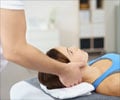- Strupp M, Kremmyda O, Adamczyk C, et al; Central ocular motor disorders, including gaze palsy and nystagmus. Journal of Neurology. 2014 Sep 261 Suppl 2:S542-58. doi: 10.1007/s00415-014-7385-9
- Thurtell MJ, Leigh RJ; Treatment of nystagmus. Current Treatment Options in Neurology. 2012 Feb 14(1):60-72. doi: 10.1007/s11940-011-0154-5
- Thurtell MJ, Joshi AC, Leone AC, et al; Crossover trial of gabapentin and memantine as treatment for acquired nystagmus. Annals of Neurology. 2010 May 67(5):676-80. doi: 10.1002/ana.21991
- Royal College of Ophthamologists, UK - (https://www.rcophth.ac.uk/wp-content/uploads/2015/02/FOCUS-AUTUMN-2014.pdf)
What is Nystagmus?
Nystagmus is a condition where one or both eyes make rapid, repetitive and uncontrolled movements. It is derived from the Greek word Nmstagmos, which denotes the nodding movements of the head due to drowsiness. The prevalence of nystagmus was found to be 24 per 10000 people.
What are the Types of Nystagmus?
Nystagmus is of two main types, depending on the onset of the condition.
- Early onset nystagmus/ congenital nystagmus: This occurs between 0-6 months of age. Typically, pendular movements are noted along with low vision.
- Late-onset nystagmus / acquired nystagmus: Late-onset or acquired nystagmus presents beyond 6 months of age.
Physiological nystagmus, which is a normal phenomenon, may also occur. It appears after 6 months of age, and may be present at extreme positions of gaze, or when the eyes follow a fast-moving object.
What Causes Nystagmus?
The eye movements are controlled by the brain (brainstem or cerebellum) and the vestibular system of the inner ear (which is also involved in balance). Problems in the brain, inner ear or the nerve pathways connecting them to the eye could result in nystagmus.
Infantile or congenital nystagmus often occurs due to poor vision. In many other cases, the cause is not known. Causes of infantile or congenital nystagmus include the following:
- Conditions associated with poor vision like congenital cataracts, myopia, astigmatism and retinopathy of prematurity
- Albinism, where the patient lacks the melanin pigment
- Aniridia, where the iris of the eye is absent
- Metabolic disorders like maple syrup urine disease and congenital hypothyroidism
- Hereditary disorders like Pelizaeus-Merzbacher disease (PMD), achromatopsia (total color blindness) and Down’s syndrome
- Other neurological conditions like brain tumors or trauma to the brain
- Idiopathic, where the cause is not known
Acquired nystagmus occurs due to conditions that appear later in life. These include:
- Conditions affecting the brain like stroke, brain infection (encephalitis), brain tumors and head injury
- Conditions affecting the inner ear like inflammation (labyrinthitis) and Meniere’s disease
- Multiple sclerosis
- Alcohol and substance abuse
- Toxicity with drugs like phenytoin, lithium, carbamazepine and barbiturates
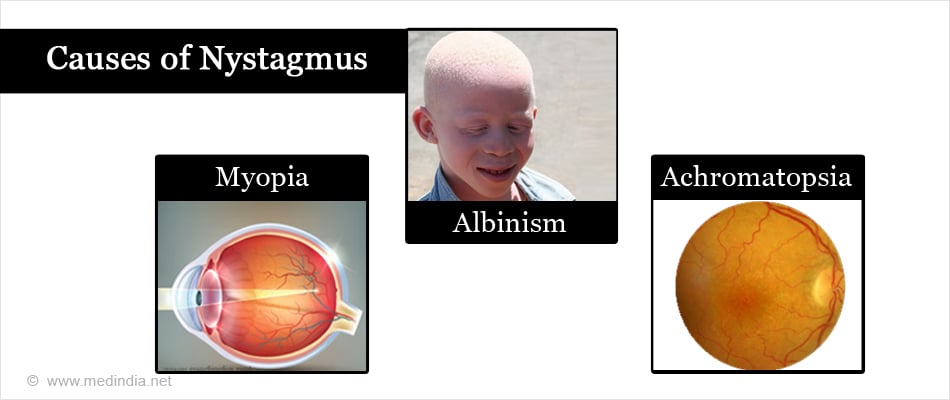
What are the Symptoms of Nystagmus?
Symptoms of nystagmus include the following:
- Jerky rhythmic eye movements, with the eyes moving from side to side, or rarely with up-down or circular movements, or even a combination of these. The movements may be fast or slow and usually occur in both eyes.
- Unusual tilting/turning of the head: The patient usually has a point where the eye movements reduce and the vision improves. This is called null point. To achieve this, the patient usually turns/twists his head.
- Oscillopsia, which is a symptom where the surroundings appear to move, shake or jump around even when the patient is static. This is usually absent in congenital nystagmus.
- Other clinical features that may also be present include the following:
- Vision problems which may include high refractive errors like myopia and difficulty in seeing in dim light
- Photophobia, where the patient may be sensitive to bright lights
- Squint/strabismus
- Symptoms of giddiness, vertigo, tinnitus and hearing loss
- Ataxia
- Recurrent falls
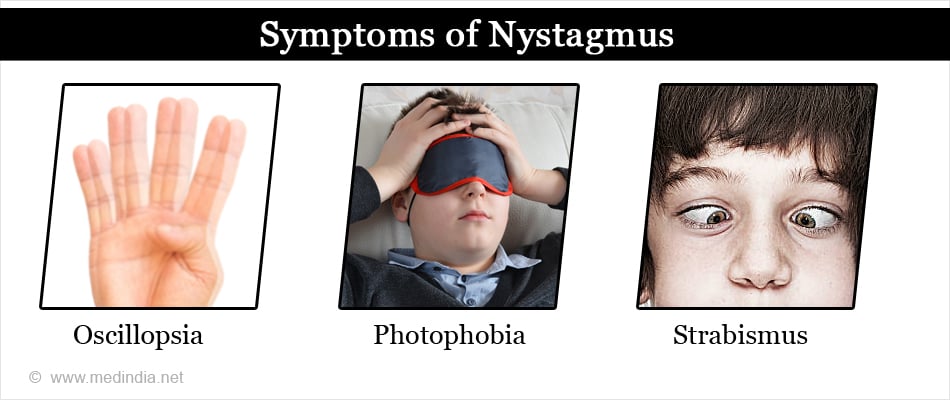
How is Nystagmus Diagnosed?
Nystagmus is diagnosed based on:
- Detailed history: The medical history should include the onset of symptoms, associated symptoms like blurred visionand neurological symptoms, and a family history of a similar condition.
- Examination of the eyes: Examination of the eyes should include the following:
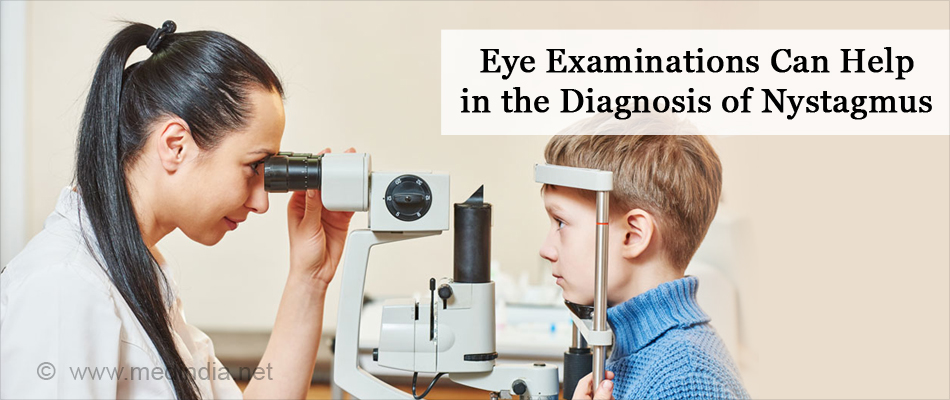
- Testing for visual acuity for individual eyes and both eyes together, including near and distance vision, and with and without spectacle correction
- Specific clinical tests to diagnose the presence, type and possible cause of nystagmus like testing for the doll's-eye reflex, the cover/uncover test and a vergence-convergence test
- Slit lamp examination to examine the eyelids, conjunctiva, cornea, iris and lens. It can detect defects like cataract and aniridia
- Dilated eye examination to check for defects in the optic nerve or the retina
- Eye movement recordings: Movements of the eyes are recorded with instruments like electrooculogram or electronystogram or scleral search coil. The different types of nystagmus can be identified based on the waveform patterns
Tests to check the vestibular system and the neurological system
- MRI brain: An MRI of the brain helps to identify the cause for acquired nystagmus or atypical congenital nystagmus.
What are the Complications of Nystagmus?
Complications of nystagmus include the following:
- Decreased vision
- Difficulty in reading small prints, computer screens and reading prints at an angle
- Poor balance leading to falls
- Learning problems, lack of focus and problems with social interactions in children
- Lack of confidence as the patient has poor vision and is not able maintain eye contact with other person.
- Easy fatigue due to the extra effort the patients has to put to look.
How is Nystagmus Treated?
Treatment of nystagmus depends on the underlying cause. It may be conservative, medical or surgical.
1. Conservative management:
- Some children with congenital nystagmus outgrow the problem and do not require any treatment.
- Patients with high refractive power need spectacles/contact lenses. These also improve the nystagmus. A prism may be added to spectacles to help to position the eye at its null point. Contact lenses are superior for nystagmus as compared to spectacles as the centre of the lens moves along with the eyes whereas while using spectacles, the eyes move back and forth from the centre of the glasses leading to unclear vision. Low vision aids like magnifiers may be used to magnify print while tinted glasses are useful for photophobic patients.
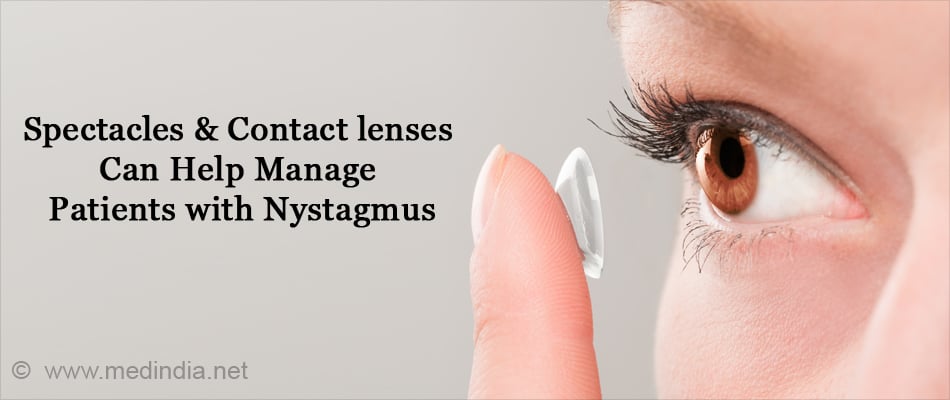
- Biofeedback training: Biofeedback training relies on visual and audio signals and makes the patient aware of his/her eye movements so that he/she can control them; this has helped few patients.
- Acupuncture and cutaneous head and neck stimulation has also proved to be beneficial.
- As stress and anxiety can worsen nystagmus, relaxation therapy can be offered to the patient.
2. Medical: Gabapentin, memantine and baclofen have been found to benefit patients with nystagmus. Botulinum toxin can be injected into the eye muscles. It paralyses the external eye muscles leading to reduction in nystagmus. The results are temporary and the injections need to be repeated every few months.
3. Surgical: Space occupying lesions like tumours which may be responsible for the symptoms can be surgically removed. To shift the null point to the primary position, resections of the external eye muscles can be done. This helps in many ways – it benefits the cosmetic appearance of the patient, reduces any associated neck pain due to abnormal positioning of the head and helps to correct the co-existing astigmatism which may be seen in some patients. Surgery can also be performed to correct squint.
How to Prevent Nystagmus?
In majority of patients, nystagmus cannot be prevented. Acquired nystagmus can be prevented to some extent by identifying the underlying cause as soon as possible and taking appropriate treatment. Drugs causing nystagmus can be stopped and alternative medication should be prescribed.
Health Tips
- An urgent ophthalmologist opinion should be sought if patient develops nystagmus.
- Support from teachers who are trained to teach visually impaired children would be beneficial if the normal school is unable to address the concerns of the child.
- As patients tend to tire easily due to the extra effort they put in reading a normal book, large print books should be provided to them. Similarly large screen computers with adjustable colour combinations should be provided.
- Adequate support must be provided to the children/adults who develop nystagmus so that they can function to the best of their abilities.


